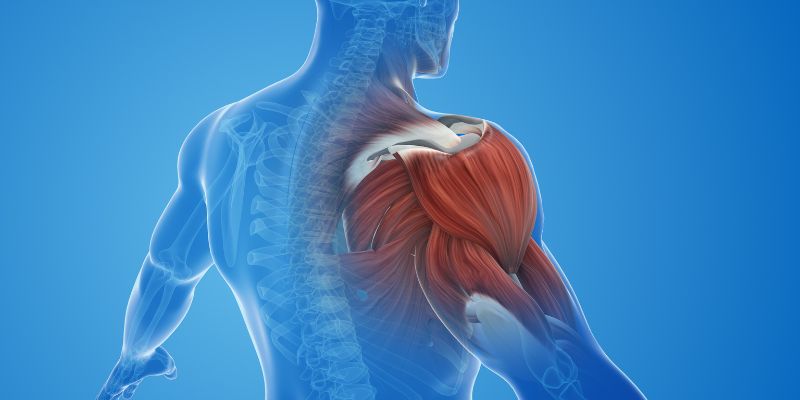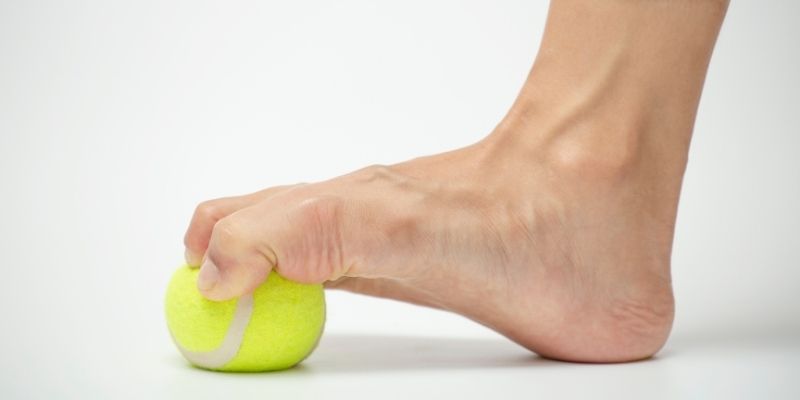Understanding and Managing Lower Back Pain
Jan 12, 2024 By Madison Evans
A prevalent issue, lower back pain significantly impacts daily life. Poor posture, muscle strain, or other underlying factors can cause this. Thus, finding relief becomes essential for overall well-being. This article explores eight effective methods to mitigate back pain and enhance your quality of life.
1. Maintain Proper Posture for a Healthy Spine
To prevent and alleviate lower back pain, you must fundamentally achieve and maintain good posture. Ensure alignment of your spine when sitting or standing, while keeping relaxed shoulders. Promote a healthy posture throughout the day by investing in an ergonomic chair and using lumbar support. This simple adjustment can significantly reduce stress on your lower back muscles.
Imbalances in muscle strength and flexibility may arise from poor posture, thereby elevating the risk of back pain. Regularly scrutinize your posture, particularly during extended periods of sitting or standing. Consciously engage your core muscles to provide supplementary support for your spine. In doing so, you will maintain a posture that is both comfortable and free from pain.
- Mindful Movements: To prevent stiffness and heighten overall posture awareness, incorporate gentle movements such as shoulder rolls and neck stretches into your daily routine.
- Ergonomic Workspace Setup: Make sure to adjust your computer monitor at eye level. Ensure that your desk and chair are appropriately adjusted. This will promote a natural, comfortable sitting posture.
2. Engage in Regular Exercise to Strengthen Core Muscles
A crucial role in relieving back pain is exercised by exercise itself. Concentrate on activities specifically designed to strengthen your core muscles. Your goal should be a robust core providing essential support for the spine. Integrate exercises like plank variations and bridges into your routine. Also include yoga poses that aim at strengthening both abdominal and back muscles. These will greatly contribute towards alleviating any discomfort or strain felt in those areas. A well-conditioned core helps distribute weight evenly, reducing strain on the lower back.
Consider incorporating activities such as swimming or cycling into your routine of traditional core exercises. These low-impact workouts will not only strengthen your core but also enhance overall fitness without overburdening your back. A consistent application of diverse exercises contributes significantly to the holistic approach towards preventing and relieving back pain.
- Balance and Stability Training: To bolster core strength and stability further, incorporate exercises like single-leg stands or stability ball routines that promote balance.
- Posture-Centric Workouts: Complement your core strengthening efforts by selecting exercise routines. Pilates, for instance, emphasizes proper posture and alignment. It is an essential aspect of overall fitness.
3. Utilize Heat and Cold Therapies for Immediate Relief
Utilizing the application of heat and cold can swiftly alleviate back pain. Employ a heating pad or warm compress to relax tense muscles, thus enhancing blood circulation. Conversely, using cold packs serves a dual purpose. They mitigate inflammation and numb the inflicted area reducing discomfort effectively. Determine which method works best for you through experimentation with both.
Remember, however, to employ them in moderation. This precaution is necessary to circumvent potential skin irritation. Consider incorporating warm baths into your routine. The buoyancy of water can alleviate spinal pressure. Coupled with heat's therapeutic effects, this practice enhances relaxation and contributes to managing long-term back pain.
- Topical Analgesics: Explore using topical creams or ointments that contain menthol or capsaicin, to enhance relief with additional localized warming or cooling sensations.

- Contrast Therapy: Leveraging the benefits of both heat and cold applications, we combine them in a sequence. Known as contrast therapy, this method significantly improves pain modulation.
4. Invest in a Supportive Mattress and Pillow
Significantly influencing your back health is the choice you make in a mattress and pillow. Ensure that you invest in a mattress that adequately supports the natural alignment of your spine. Likewise, select a pillow that is supportive but not strain-inducing for comfort to both the head and neck. Investing in quality sleep accessories. This action can significantly enhance the quality of your sleep and diminish waking up with back pain.
Regularly assess your mattress and pillow's condition, their supportive properties may be compromised by worn-out or sagging surfaces. To sustain optimal spinal alignment during sleep, a promoter of restful nights, minimalizing the risk of waking up with back discomfort. Consider replacement when necessary.
- Adjustable Beds: Delve into the utilization of adjustable beds. They empower you to customize your sleeping position, a provision that offers optimal back support and minimizes discomfort risks.
- Pillow Between Knees: As a side sleeper, you can maintain proper spine alignment and reduce strain on your lower back by placing a pillow between your knees.
5. Stay Hydrated to Support Spinal Disc Health
In the realm of back pain relief, people often neglect hydration. Spinal discs are the cushions between vertebrae. These rely on adequate hydration for their health. Reduced disc height and heightened vulnerability to back pain can result from dehydration. Ensure your daily water intake remains sufficient to optimize spinal disc function and promote overall joint health.
Incorporate water-rich fruits and vegetables, which hydrate your body, into your diet. This action not only aids in hydration. It also provides essential nutrients: a crucial contribution to overall spinal health. Ensure the resilience of spinal discs by maintaining proper fluid balance. Thereby, reducing the likelihood of compression-related back pain.
- Electrolyte Balance: Incorporate potassium-rich foods like bananas and oranges to maintain a balance of electrolytes. This will support proper muscle function and disc health.
- Herbal Teas: To enhance your hydration endeavors and foster holistic well-being, incorporate herbal teas renowned for their anti-inflammatory properties, such as chamomile or ginger tea.
6. Practice Mindful Stress Management Techniques
Incorporate stress management techniques like meditation, deep breathing exercises, or mindfulness practices into your daily routine to mitigate the physical manifestations of stress that contribute to back pain. Addressing the root of your stress can prevent tension from accumulating in your back muscles and worsening any existing pain.
Practicing mindful movement, including tai chi or gentle yoga, reduces stress and promotes muscle flexibility and relaxation. These holistic approaches enhance mental and physical well-being, thereby positively impacting overall back health.
- Progressive Muscle Relaxation: Incorporate progressive muscle relaxation techniques into your stress management regimen. Concentrate on alleviating tension from distinct muscle groups. This will amplify overall relaxation.
- Nature Walks: Partake in brief nature walks. Studies link exposure to green spaces, a practice associated with reduced stress levels and enhanced emotional well-being.
7. Explore Alternative Therapies for Holistic Relief
Acupuncture and chiropractic care, alternative therapies, offer holistic relief for back pain. Acupuncture achieves this by inserting thin needles into specific body points. This is a process that stimulates energy flow and diminishes pain. On the other hand, chiropractic adjustments concentrate their efforts on aligning the spine, a strategy to tackle potential contributors of backache. Consult with qualified practitioners to explore these complementary approaches.
Consider integrating massage therapy into your back-pain management plan, in addition to acupuncture and chiropractic care. Not only does massage alleviate muscle tension, but it also promotes blood circulation and relaxation. These factors contribute significantly to enhancing the overall well-being of your spine.
- Cupping Therapy: Examine cupping therapy which is a technique rooted in traditional Chinese medicine. It employs suction cups and its purpose is to promote blood flow stimulation and encourage healing within specific regions of the back.

- Yoga Therapy Sessions: Participate in tailor-made yoga therapy sessions designed to address your specific back pain concerns. These sessions amalgamate the advantages of movement, breathwork, and relaxation techniques.
8. Maintain a Healthy Weight to Reduce Strain on the Back
By placing additional stress on the spine and its supporting structures, excess weight may contribute to back pain. You can reduce strain on your lower back by adopting a healthy diet and engaging in regular physical activity to achieve and maintain an optimal weight. Strive for a balanced diet abundant in nutrients, supporting overall well-being while promoting spinal health.
Incorporate mindful eating practices into your routine. Pay attention to portion sizes. Choose nutrient-dense foods. Gradually lose weight through a sustainable, balanced approach. This not only improves overall health but also significantly reduces back pain by lessening the load on the spine.
- Strength Training: Incorporate resistance training exercises into your fitness routine. This will reinforce muscle mass. Furthermore, an amplified metabolism can be achieved which is a key facilitator in weight management. Thus, enhancing overall health and wellness.
- Nutrition Counseling: To tailor a nutrition plan that aligns with your weight management and overall health goals, seek the guidance of a dietitian or nutritionist.
Incorporate these eight strategies into your lifestyle. They can significantly alleviate and prevent lower back pain. Consistency is key. It may require time to reap the full benefits of these approaches. Addressing proactively the root causes of your back pain allows you to enjoy enhanced comfort, and improved mobility, thereby elevating overall life quality.

Six Health Benefits of Litchi: Reasons to Include Them in Your Diet

Understanding Shoulder Acne: Why It Happens and How to Treat It

How To Get Rid of Muscles Knots: Six Effective Ways to Treat

Discovering Goldenseal - A Natural Marvel

How long does it take to recover from a stroke

Want Stronger Legs and Core? Try These Toe Tap Workouts!

Exploring the Health Benefits of Oatmeal: A Nutrient-Rich Breakfast Choice


